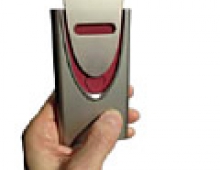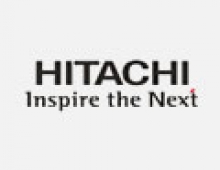
Hitachi Unveils Digital Signatures on Stand-Alone Memory Chips
Hitachi has made available anti-counterfeiting functionalities on memory chips without microprocessor such as memory cards, tickets or cartridges.
The Japanese company announced today the development
of a mechanism for attesting the authenticity of
memory chips using highly secure digital signatures.
Since the mechanism requires neither a CPU nor a computational unit, high security can be attained at a very low cost. As a result, counterfeited or altered memory devices can be recognized as such, with a wide range of applications, including memory cards for digital cameras or handheld video game consoles, cartridges for consumer products, admission tickets or gift coupons.
In order to establish that digital contents are authentic and have not been tampered with, digital signatures usually involve cost-intensive computations and require an important processing power. For instance, in some schemes, large integers with hundreds of digits are multiplied hundreds of times using a powerful CPU. As a consequence, conventional memory chips without CPU cannot handle digital signatures and are confined to the use of basic identification techniques based for example on serial numbers. Moreover, adding a CPU with sufficient processing power for digital signatures to such chips would considerably raise their cost.
This is the original motivation behind Hitachi's effort to develop a digital signature technique which, for the first time in the world, does not require any CPU and can be readily integrated in a memory chip. In this new scheme, data required for digital signatures is pre-calculated and stored in memory. Later, this data is re-combined appropriately in order to assemble a digital signature. Unlike conventional digital signatures which require an important processing power, the new digital signature system can be realized in simple memory chip.
Now, with Hitachi's technology, CHAP systems may be used in applications where highly secure authentication is required, at a low cost. In particular, the digital signature scheme can serve as building blocks for anti-copy and anti-tampering mechanisms for a wide range of products, including memory cards for digital cameras or handheld video game consoles, authentication tokens, replacement parts for consumer electronics, admission tickets or gift coupons.
Challenge Handshake Authentication Protocol (CHAP) is an authentication method where a verifier sends a random challenge to a prover who replies with a digital signature of the challenge.
The research results will be announced at the 9th International Workshop on Information Security Applications (WISA 2008) which will be held in Jeju Island, Korea, from September 23 to 25, and in the Second Workshop on Post-Quantum Cryptography (PQCrypto 2008), which will be held in Cincinnati, Ohio, USA, from October 17 to 19.
Since the mechanism requires neither a CPU nor a computational unit, high security can be attained at a very low cost. As a result, counterfeited or altered memory devices can be recognized as such, with a wide range of applications, including memory cards for digital cameras or handheld video game consoles, cartridges for consumer products, admission tickets or gift coupons.
In order to establish that digital contents are authentic and have not been tampered with, digital signatures usually involve cost-intensive computations and require an important processing power. For instance, in some schemes, large integers with hundreds of digits are multiplied hundreds of times using a powerful CPU. As a consequence, conventional memory chips without CPU cannot handle digital signatures and are confined to the use of basic identification techniques based for example on serial numbers. Moreover, adding a CPU with sufficient processing power for digital signatures to such chips would considerably raise their cost.
This is the original motivation behind Hitachi's effort to develop a digital signature technique which, for the first time in the world, does not require any CPU and can be readily integrated in a memory chip. In this new scheme, data required for digital signatures is pre-calculated and stored in memory. Later, this data is re-combined appropriately in order to assemble a digital signature. Unlike conventional digital signatures which require an important processing power, the new digital signature system can be realized in simple memory chip.
Now, with Hitachi's technology, CHAP systems may be used in applications where highly secure authentication is required, at a low cost. In particular, the digital signature scheme can serve as building blocks for anti-copy and anti-tampering mechanisms for a wide range of products, including memory cards for digital cameras or handheld video game consoles, authentication tokens, replacement parts for consumer electronics, admission tickets or gift coupons.
Challenge Handshake Authentication Protocol (CHAP) is an authentication method where a verifier sends a random challenge to a prover who replies with a digital signature of the challenge.
The research results will be announced at the 9th International Workshop on Information Security Applications (WISA 2008) which will be held in Jeju Island, Korea, from September 23 to 25, and in the Second Workshop on Post-Quantum Cryptography (PQCrypto 2008), which will be held in Cincinnati, Ohio, USA, from October 17 to 19.





















